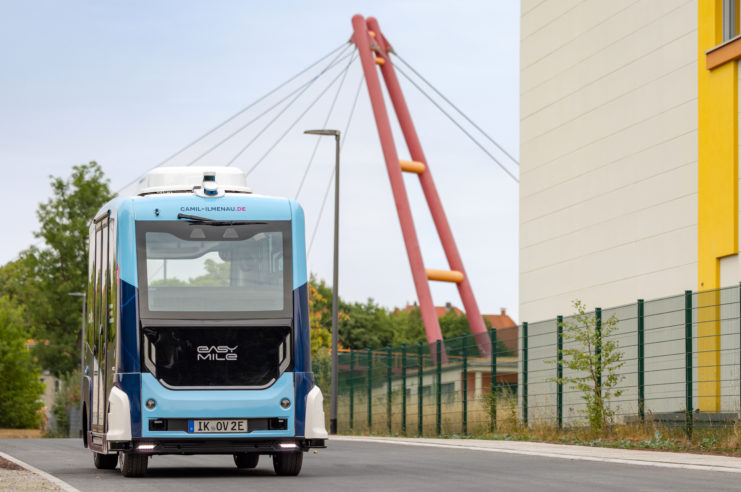How safe is the vehicle?
As an autonomous shuttle, CAMIL has cameras and LiDAR sensors. LiDAR means "light detection and ranging" and works something like a scanner. These sensors capture and process the recorded data to create a 360-degree image of the environment, including other road users. By processing the data in real time and using unique software, CAMIL can adapt its behaviour to any situation on the road (e.g. stop, drive or slow down, etc.).
In addition, the vehicle is in constant communication with the EasyMile Supervision Centre, which supervises the vehicle remotely.
In addition, there is always a human attendant, a so-called operator, on board who can take control at any time.
If the automated minibus brakes in front of a sudden obstacle, the shuttle does not take evasive action on its own. If an evasive manoeuvre is necessary, the shuttle is controlled manually by the operator.

